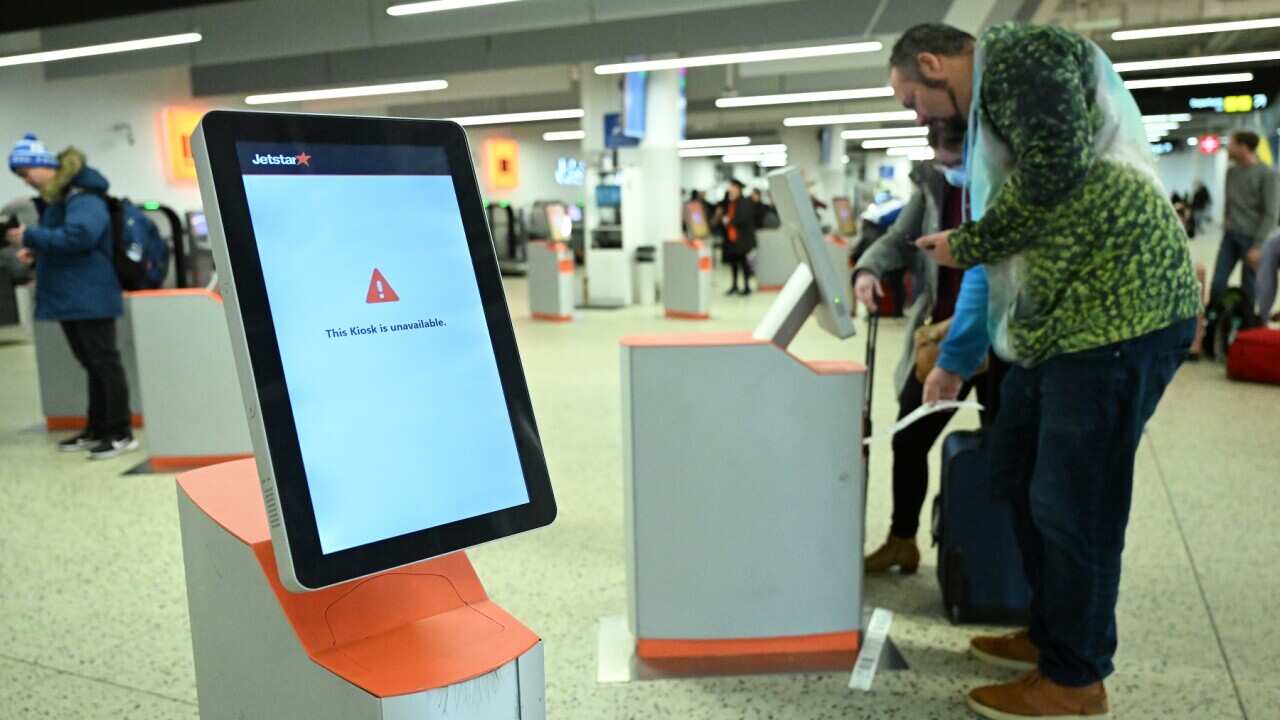TRANSCRIPT
Sailors standing to attention onboard H-M-A-S Sydney, as the navy's top brass are joined by Defence Minister Richard Marles to unveil a new course.
“The Albanese government is announcing, an increase in the number of warships to being the largest fleet since the end of the second world war.”
The Deputy Prime Minister unveiling plans for a major renewal of its ageing fleet, over fears it will be be outgunned in any future conflict.
The number of combat vessels will expand from eleven to twenty-six.
Navy Chief Vice Admiral Mark Hammond is welcomed the investment - which comes at a total cost of $54 billion dollars.
“This will be the largest surface combatant force we have operated in generations, it will also be in time the most lethal.”
With existing vessels fast approaching end-of-life, and current projects facing billion dollar blow-outs and delays, the government is acting on an extensive review led by retired United States Navy Vice Admiral William Hilarides.
The Government's order for nine Hunter-class anti-submarine frigates built in Adelaide will be cut down to six.
While three Existing Hobart-class air warfare destroyers will get further upgrades.
Eleven new general purpose frigates using an existing international design will be ordered as part of a second tier of combat vessels.
The first three will be built overseas, the remaining eight in Western Australia to fast-track their deployment.
The big political boon for Labor - sustaining a pipeline of shipbuilding work in South Australia, where the Hunter class is built and maintained, and WA where work is underway to upgrade Henderson shipyard.
South Australian Premier Peter Malinauskus, speaking in Adelaide:
“This day has been a long time coming. We have wanted for a long time, certainty for the surface ship workforce here in South Australia. The country, frankly, has been looking for certainty around what vessels will provide us the sovereignty and the security that we need in the decades to come. And today, the Commonwealth has unambiguously delivered us a commitment that can be banked on.”
The Government also plans to acquire six large "optionally crewed" vessels - each armed with 32 missile launching cells.
The drone-like vessels carrying serious firepower - are currently under development in the United States - to become operational in the mid-2030s.
Defence minister Richard Marles explains.
“It is true that these are being developed in a manner where they can be uncrewed but it is our intention to crew them. And so we will be working with the United States in relation to this, we're very confident about being able to put them in our navy over the timeframe we've described.”
The government has scrapped plans to extend the lift of the ANZAC class frigates first introduced in the 1980s.
With the process of decommissioning lead-ship HMAS ANZAC to commence - its replacements won't be operational for at least decade.
Shadow Defence Minister Andrew Hastie warns in the interim - Australia's navy remains vulnerable amid growing fears over conflict in our region.
“We won't see a ship in the water until 2031 assuming this plane stays to timeline, it does not meet the urgent strategic challenges met by this dangerous world. It's somewhat ironic that the Iranian-backed Houthis probably have better strike capability than the ADF.”
As Jennifer Parker, an expert associate at the ANU Security College explains - the fleet's size will contract in the short-term.
“I think that the government have made an assessment that potentially the risk is not necessarily as great in the next four years. Now, that's not necessarily aligned with what some of our allies have said. But it's also difficult to get ships, you can't just call Amazon and get a ship delivered. So it does take time.))
The fleet investment comes as the Navy, like other sections of defence, grapples with recruitment challenges.
It currently has around 15,000 uniformed personnel - it aims to grow that number to 20,000 by 2040.
Minister Marles says this announcement - provides a key incentive.
“There's already great work has been done to reduce the separation rate for our Navy. We do need to be growing our Navy more. I think today's announcement is a really fundamental part of that and we're confident we can get those numbers.”





